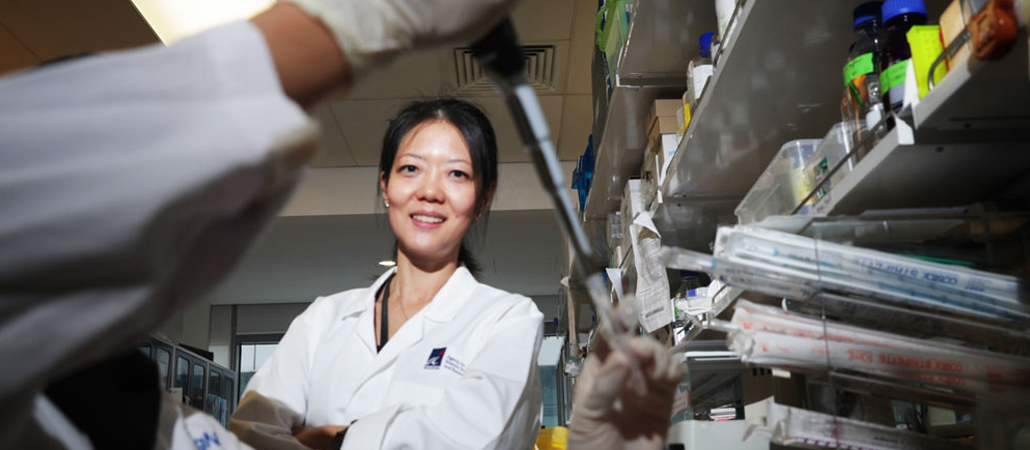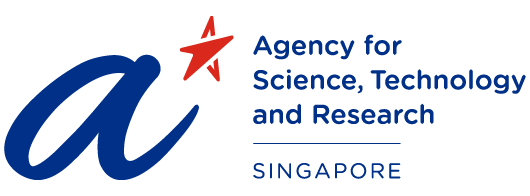A*STAR NEWS
Singapore labs join global race to learn about virus
Published on 16 February 2020 | By Audrey Tan | Source: The Straits Times © Singapore Press Holdings Limited. Permission required for reproduction.

Professor Lisa Ng was part of a team at A*STAR that developed a kit which could test for the SARS virus in patient blood samples in 2003.
Having made a diagnostic test kit, scientists here now hope to develop a possible cure
How does the fight against the spread of a disease begin, if the virus causing it is something that no one has seen or heard of before?
As with most mysteries, it starts with first seeking answers to the most basic of questions: What is it? How does it spread? How severe is the infection it causes?
Enter the scientists, the detectives of the microbe world.
Working in laboratories, away from the glare of the public spotlight, scientists are in a race against time to answer these questions – answers that others could build upon to save lives, improve patient care and boost public health through developing diagnostic test kits, drugs and even a vaccine.
As the Health Ministry’s Chief Health Scientist, Professor Tan Chorh Chuan, told the media last week: “To fight a war, you must know your enemy.”
The mystery virus first surfaced in Wuhan, China, late last December, with those infected exhibiting pneumonia-like symptoms. Since then, the virus – now identified as SARS-CoV-2 (the disease itself is COVID-19) – has spread around the globe, including in Singapore.
Many unknowns remain about it, although scientists around the world were handed an important clue when Chinese scientists first uploaded the genome of the coronavirus on a public database last month.
It allowed scientists to determine that it was related to the one that caused the severe acute respiratory syndrome (SARS) in 2003.
The availability of the genome was also a good starting point for scientists in Singapore, paving the way for the development of a diagnostic test kit, enabling clinicians to quickly screen for patients infected with the coronavirus, with high accuracy.
Developed by experts from the Agency for Science, Technology and Research (A*STAR) and Tan Tock Seng Hospital, the kit has been rolled out at a number of public hospitals here and also delivered to China.
A diagnostic test “flags” parts of the viral genome unique to SARS-CoV-2 in a patient sample.
Care is taken to ensure the genetic sequence flagged is the more stable part that is less prone to mutation. But this does not rule out mutation occurring, which viruses are prone to doing.
If it does, the test has to be modified quickly.
This is why we have to work closely with the A*STAR researchers at the Bioinformatics Institute who study the genome of the virus.
Dr Masafumi Inoue, co-developer of the diagnostic test kit, who is also Head of the Diagnostics group in the Translational Sciences Division at A*STAR’s Experimental Drug Development Centre said.
“The latest analyses show that the virus has not mutated in our targeted region of its genome.”
With Singapore already having the capability to quickly screen patients for the virus, the next step is to find out how they can be treated.
This is what Professor Lisa Ng, senior principal investigator at A*STAR’s Singapore Immunology Network, aims to find out.
She studies how the virus works, and how the human body reacts to it, by analysing samples from patients in Singapore, and by working closely with clinicians and healthcare workers who interact directly with patients.
In the presence of a virus, the immune system will mount a protective response. By studying these mechanisms, it could pave the way for the development of therapies and even a possible vaccine.
Professor Lisa Ng, Senior Principal Investigator at A*STAR’s Singapore Immunology Network said.
Since the SARS outbreak, the research community has become more organised over the past 17 years, notes Prof Tan, and advancements in technology have also yielded new capabilities, such as rapid whole genome sequencing.
R&D is integral to preparedness and effective response.
Professor Tan Chorh Chuan, Health Ministry’s Chief Health Scientist said.
Search for Cure Like Finding Needle in a Haystack: Investigator
Professor Lisa Ng, 46, is part of a team searching for a cure for COVID-19 - the "mystery" disease with pneumonia-like symptoms originating from Wuhan, China, that only recently got a name.
It is a noble task, but one that can feel like searching for a needle in a haystack, says Prof Ng, Senior Principal Investigator with the Agency for Science, Technology and Research's (A*STAR) Singapore Immunology Network.
Before a cure or vaccine can be developed for COVID-19, which has infected more than 67,000 people worldwide, scientists must first understand how the human body responds to the virus infection.
This is necessary in order to develop immune-based therapies that can stimulate the body's natural protective response against the virus, which provides a longer-term protection for the patient than drugs.
But studying how the body responds to the virus is a long process. The first step entails the search for immune system indicators - such as protein levels and the presence of antibodies - in samples taken from patients who have recovered.
As there can be thousands of such indicators present in a human body at any given time, it can be challenging to identify the specific elements of the immune system mounting the defence against the virus causing COVID-19, says Prof Ng.
The immune system comprises many different elements which all work together to rid the body of bacteria, parasites and viruses.
An important component of this system is antibodies, which are found in the blood. They detect the presence of a virus and latch on to the infected cell, flagging it so other elements of the immune system can kick in to destroy it.
When faced with a new or previously unidentified threat, the body will typically manufacture new antibodies to get rid of it.
"So, when it comes to searching for clues to how a person's immune system mounts a defence against this specific virus, which is so new, it sometimes feels like we are going in blind," Prof Ng tells Insight.
"But we are guided by certain basic understanding of biology, immunology and patient physiology," says the viral immunologist, who studies how humans respond to other vector-borne diseases such as chikungunya and Zika.
Though she had always been interested in the study of diseases in humans, Prof Ng says it was her experience during the severe acute respiratory syndrome (SARS) outbreak that changed her perception of the role of scientists in such outbreaks.
She was part of a team at A*STAR that developed a kit which could test for the SARS virus in patient blood samples back in 2003.
At that time, the most common way to test for the presence of viruses that cause respiratory diseases in patients was to first collect nasal samples from them.
But Prof Ng had learnt that this method could expose healthcare workers to infection risk. In the early days of SARS, clinical sample collection equipment for infectious pathogens was not as sophisticated as it currently is.
The development of a diagnostic test that could detect the presence of the virus in blood samples - which have lower levels of the virus than nasal samples - was a breakthrough that also gave healthcare workers some peace of mind.
That experience taught me that being a scientist is not just about hiding in the lab, looking at cells and then just about publishing papers about it.
It's also about how we can help to improve and save lives.
Professor Ng said.
Was This Article Helpful ?
A*STAR celebrates International Women's Day

From groundbreaking discoveries to cutting-edge research, our researchers are empowering the next generation of female science, technology, engineering and mathematics (STEM) leaders.
Get inspired by our #WomeninSTEM
